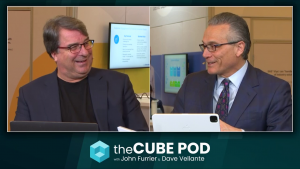Oracle Virtualization Reduces Cores, Increases Utilization, Saves Money
![]() A new report from Wikibon.org CTO David Floyer, based on 15, hour-long interviews with Oracle users, brings good news for CIOs considering virtualizing large Oracle installations. Go ahead. Oracle’s resistance is trivial, Oracle virtualization using popular third-party hypervisors is fairly straightforward, and the savings are very attractive.
A new report from Wikibon.org CTO David Floyer, based on 15, hour-long interviews with Oracle users, brings good news for CIOs considering virtualizing large Oracle installations. Go ahead. Oracle’s resistance is trivial, Oracle virtualization using popular third-party hypervisors is fairly straightforward, and the savings are very attractive.
The 15 CIOs interviewed said that Oracle has taken a pragmatic approach to support. Despite its official line, the 15 interviewees reported trivial resistance at most from Oracle sales and support to their plans to virtualize. The Oracle sales team would suggest using Oracle VM or Exadata but retreat into resigned acceptance when that was rejected.
One senior executive is quoted as saying, “…if we go down the Exadata path, now my DBA becomes my storage and operating system engineer. And that is a difficult pill to swallow. What we have done, however, is to take the Exadata concept – the x86 server, the storage layer, and the high-speed interconnect integration – and we have built our own architectural model along those lines.”
Floyer provides an in-depth analysis of three approaches to virtualizing Oracle:
- Hypervisor-only service including using hypervisor services to recover an instance on another VM if necessary;
- Hypervisor with Oracle Clusterware or other customer software;
- Hypervisor with full Oracle RAC.
All of these, he finds, provide large advantages, and which is best depends on the needs of the specific company and installation. The third choice is the most expensive, because it includes the cost of the RAC, but all come out far ahead of a traditional, unvirtualized infrastructure.
Floyer’s research shows that the three-year cost to deploy a typical Oracle core is $32,500, of which the cost of the Oracle database license and maintenance is 89% or $29,000. He analyzed a typical Oracle installation of 192 cores (12 servers with 2 sockets per server and 8 cores per socket). Virtualizing the system using extended function VMware and Oracle Clusterware, optimizing the IO response time to <2ms, and ensuring the IO variance is as low as possible allows the system overall to be reduced to 120 cores (10 servers, 2 sockets per server, six cores per socket), saving about $2 million in three years over than the traditional configuration. And as a bonus, IO wait times and the impact of occasional IO storms on database locking are reduced significantly.
Floyer warns that virtualization brings organizational as well as technical challenges, but the savings ultimately far outweigh the problems. “The single most difficult change required to achieve Oracle high availability optimization is aligning budget responsibilities for virtualized Oracle Database Services,” Floyer concludes. “Establishing the default of using Oracle database service and putting in place a process for Oracle License negotiation will lead to a very significant savings to IT and the organization.”
As with all Wikibon research, this report is available for free in its entirety on the Wikibon Web site. IT professionals are invited to register for free membership, which allows them to comment on the research and post their own tips, Alerts, and white papers for other community members to read, and to attend Wikibon Peer Incite meetings, where their peers discuss how they have solved real business IT problems using advanced technologies.
A message from John Furrier, co-founder of SiliconANGLE:
Your vote of support is important to us and it helps us keep the content FREE.
One click below supports our mission to provide free, deep, and relevant content.
Join our community on YouTube
Join the community that includes more than 15,000 #CubeAlumni experts, including Amazon.com CEO Andy Jassy, Dell Technologies founder and CEO Michael Dell, Intel CEO Pat Gelsinger, and many more luminaries and experts.
THANK YOU













